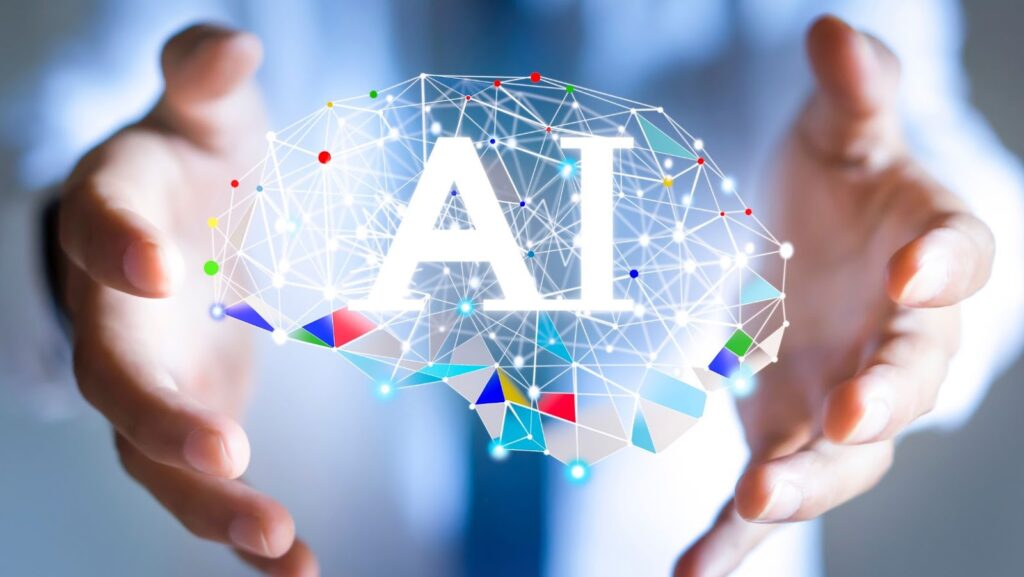The quest for AI has been ongoing for many decades, but the concept of explainable AI is a more recent phenomenon. With the increasing power of AI, there has been a growing demand for better and more explainable AI that can take decisions and act accordingly.
A recent investment of $580M in Anthropic furthers this quest for better and more explainable AI. This article will explore what explainable AI is, why it is important and how Anthropic is leveraging this technology.
Anthropic’s quest for better, more explainable AI attracts $580M
AI is an area of computer science that focuses on making machinery more capable of intelligent behavior. AI is designed to enable computers and machines to perform complex tasks, detect patterns and make decisions based on data analysis. It encompasses a range of techniques from robotics and deep learning to natural language processing, as well as applied mathematics, linguistics, statistics and related sciences.
AI has been used in many industries for a variety of tasks – from medical diagnostics to autonomous vehicles or robots. AI-driven systems can handle complex problems by applying advanced algorithms to solve them. With advancements in technology over the years, AI has been improved and adopted in many areas.
In recent years the focus has shifted towards making AI more explainable, transparent and responsible; this means taking into account the ethical implications of introducing AI into certain sectors where decisions might affect people’s lives – autonomous cars being one example (such decisions could involve not only safety, but also whether or not it should swerve away from a person versus a pet). This increasingly important field is becoming known as ‘Explainable AI’ – one that attempts to explain its decision-making process.
What is explainable AI?
Explainable Artificial Intelligence (XAI) is a branch of machine learning that focuses on making algorithms more transparent and explainable, so that humans can better understand how and why a machine or computer system makes its own decisions. This branch of research is becoming increasingly important in both healthcare and business settings; for example, when you want to understand why a system made a certain decision in diagnosing an illness or detecting fraud.
By understanding the inner workings of algorithms, we can better create systems that make more informed decisions, build trust within stakeholders, maximize efficiency and accuracy, reduce data bias, and better act upon the outputs they produce.
To achieve this goal, researchers have proposed various methods such as role-based explanation methods that rely on user input, explainable metric optimization methods that measure AI closeness to human behaviors, rules-based methods allowing users to add focus questions over specific objects or attributes in a dataset and post hoc machine learning explanations derived from log files and training data.
These developments are part of the ongoing quest for better AI transparency which will help ensure it remains accountable and provide users with ways to audit its performance. Ultimately this could serve at least two purposes: ensuring fairness in automated decision making; or improving user engagement with technology by providing reassurance on its processes taken into account when reaching conclusions.

AI Landscape
The AI Landscape is transforming Anthropic, a Boston-based venture capital firm, recently announced a $580M investment. This is a sign of the growing importance of AI and its potential to revolutionize industries.
This investment is part of Anthropic’s quest for better, more explainable AI. In this article, we’ll look at the current landscape of AI and explore why explainable AI is so important, what Anthropic’s investment means, and how it might help the AI landscape evolve shortly.
AI Challenges
Generally, AI technologies are split between two main types — symbolic AI and connectionist/sub-symbolic AI. Symbolism is focused on encoding knowledge as symbols and “if x then y” rules and reason about them. In contrast, connectionism deals with learning from data and using connections between system components to represent the data and make decisions.
Most experts state that general AI (the type of system that can autonomously interact with real-world environments) requires both symbolism and connectionism. However, there are numerous challenges associated with both approaches.
For symbolist AI — challenges include a lack of scalability for larger amounts of official knowledge, decreases in accuracy due to errors incurred when constructing rule sets, domain specificity (since rule sets must be encoded first before they can be used), difficulty changing goals mid-execution, an inability to detect novel entities or situation changes in the environment while executing tasks given existing rulesets (i.e., the definition of ‘expertise’).
For sub-symbolic AI — challenges span interpretability/explainability when making decisions based on massive levels of training data, ethical situations arising out of potential bias embedded into decision making models ( i.e., fairness ), blind spots associated with neural networks that require large amounts of sometimes regionally or culturally specific data from which to make inferences from, as well as difficulties associated with continual learning or updating a machine’s knowledge base using new information without sacrificing accuracy or introducing errors into its environment interactions.

AI Opportunities
The development of artificial intelligence (AI) has opened up a world of possibilities for businesses. AI offers the potential to reduce costs, increase efficiency and improve customer service, providing companies with a competitive edge in the marketplace. By leveraging the power of AI to automate tasks, companies can drastically reduce their manpower needs, potentially saving on labor cost and allowing them focus on their core competencies. In addition, using AI-powered solutions such as predictive analytics and machine learning provides businesses with insights into customer behavior and opportunities to optimize operations.
There are a variety of different applications of artificial intelligence in businesses today. For example, natural language processing (NLP) is an AI technology that helps computers understand human language and makes it easier for customers to interact with automated systems. Image recognition helps machines recognize images such as faces or objects in photographs. Machine learning frameworks allow computers to learn from data and experience independently, offering opportunities for personalized recommendations or providing better search results based on user history or preferences.
With the help of deep learning techniques, organizations can develop models powered by large datasets instead of relying on general-purpose algorithms that tend to over-simplify complex concepts to make them solvable by machines. Scale has also become an important factor for businesses seeking AI solutions –– platforms like Kubernetes allow data scientists, software engineers, system administrators and other professionals to scale AI workloads quickly without sacrificing performance or reliability while lowering development costs.
Effective implementation is key for organizations looking towards these technologies as part of their growth strategy to get maximum ROI from their investments in these cutting-edge technologies. Companies need access to resources such as experienced developers specialized in dealing with machine learning problems; well curated datasets; modern cloud computing platforms; real time streaming processing capabilities etc., before they can provide AI capabilities into existing workflows or develop entirely new products that leverage the power of artificial intelligence . Breaking down larger projects into subparts allows teams distribute responsibilities among different roles who will typically specialize in different fields – from data science experts who build models out of structured datasets , software developers who are adept at Turning those models into practical web applications , system architect who handle DevOps aspects related scaling & maintaining performance & System administrators dedicated for Managing underlying infrastructure and finally QAs focused testing flows & pipelines before it goes into Production . Explaining all these components enable organizations tap full potential out of current people & ensuring teams could deliver expected results within limited time frames efficiently.
The Quest for Better, More Explainable AI
Artificial intelligence (AI) has become increasingly popular among tech companies and venture capitalists. To make the most of this new technology, researchers have begun to focus more on creating AI that is not only more efficient and accurate, but also more explainable and interpretable. This is known as “Anthropic’s quest for better, more explainable AI”, and has recently attracted $580M of investment.
In this article, we will look at the potential of this technology and why it is such an attractive investment.
Anthropic’s Investment
In the quest to develop more explainable AI, anthropic, a venture capital firm and AI technology company, is investing millions into machine learning. This investment focuses on developing AI technology with transparency and usability in front of mind. The goal is to improve the trustworthiness of AI algorithms and make them available for multiple use cases.
Anthropic’s primary focus is engineering models that address data interpretability by providing users with visualizations and comprehensible metrics to interpret stakeholders’ performance. Through their investments, they aim to provide solutions for better explanation in customers’ decision-making processes, gain insight into data correlations in real-time, and feed into stakeholders’ decisions by understanding how they contribute to the outcome progress.
By identifying relationships between different elements in datasets such as measurements, images or text documents, Anthropic aims to detect any meaningful underlying structure and extract the most relevant information. This indicates a shift from black box deep learning models to explainable networks using natural language processing techniques. Anthropic believes this approach will generate beneficial actionable insights while decreasing errors.

Anthropic’s Mission
Anthropic is an AI development company whose stated mission is “ensuring explainable and responsible AI”. Founded in 2019, Anthropic is on a quest to develop technologies designed to be transparent and reliable, while still providing the power needed for a competitive AI solution. This technology will benefit businesses, government organizations, and everyday citizens.
Anthropic seeks to address the current problem of artificial intelligence’s limited explainability to promote trustworthiness and acceptance for AI. The company is dedicated to researching and developing methods for making these systems more understandable by humans. This includes using methods such as machine learning-based algorithms for interpretability, natural language processing for interface communication, knowledge graphs for cognitive understanding of context spaces/situations, probabilistic reasoning for understanding uncertainty when training AIs, causal inference approaches to make decisions that account for causal relationships associated with decision making tasks when pursuing goals.
The ultimate goal of Anthropic’s mission is to empower decision makers with a better understanding of their decisions with the help of tools powered by artificial intelligence while also restoring public trust in AI-based solutions.
Benefits of Explainable AI
Explainable AI (XAI) is a type of Artificial Intelligence (AI) that enables the interpretation of large data sets and machine learning models. XAI aims to improve the transparency of AI systems and make them more understandable for humans. With XAI’s rising popularity and potential, the Anthropic’s quest for better, more explainable AI has recently attracted a $580 million investment.
Let’s take a closer look at the potential benefits of XAI.
Improved Decision Making
Explainable AI (XAI) is an endeavor to create better, more explainable, and easier-to-deploy algorithms. In simpler terms, it is about creating interpretable AI models that can explain their decisions to humans in ways that we can intuitively understand, as this will result in improved decision making. By enhancing trust in these systems’ decisions, they can be used more optimally by a much wider range of users — from self-drivers to medical diagnoses — with fewer hindrances.
XAI algorithms learn by breaking down complex tasks into smaller components that humans can comprehend easily. This provides users with insights into the reasoning behind the system’s actions instead of only providing ‘black box’ outputs. For example, a healthcare AI model may explain why it recommends a particular drug or course of treatment for a particular patient. This helps build trust and confidence among these systems’ users and also ensures that any resulting conclusions are reliable.
Besides improved decision making, XAI also makes machines more accountable for their actions since explanations help understand its output logic and determine whether bias is present. These algorithms allow for transparency on the model’s outputs so misgivings are kept in check if applications such as facial recognition software are used for surveillance purposes or any other area where privacy breaches are possible existentially or otherwise.
Increased Transparency
The quest for more explainable and transparent AI is gaining widespread traction due to its potential to increase accountability and reduce bias. For example, when developing an AI model, increased transparency enables developers to audit the model’s results more easily, allowing them to pinpoint issues such as mislabeled training data or unintentional bias. This is especially important in mission-critical applications such as autonomous driving and health care, where a small mistake can have dire consequences.
Explainable AI also lets users gain insight into the reasoning behind automated decisions by providing explanations in a human-readable form. In addition, augmented intelligence (AI with built-in human input or control) improves the accuracy of decision making by incorporating expert or user “common sense” suggestions into the automation process. Finally, explainable AI can also help reduce ethical risks associated with automated decision making. By making automated decisions theoretically traceable back to their original inputs and data sources, stakeholders can hold each other accountable for how algorithms are being used and make sure those with ownership over data are fairly compensated for its use.
Enhanced Human-AI Collaboration
Explainable AI (XAI) technologies are crucial for successful human-AI collaboration in complex healthcare and autonomous navigation tasks. By eliminating the “black box” problem of current AI systems, XAI aims to make AI models more interpretable and transparent to end users. Furthermore, through machine learning algorithms enhanced with explanations and visualizations, XAI enables more meaningful collaboration between humans and machines while leveraging the accuracy of machine learning methods.
In healthcare, XAI can provide clinicians with insights on how machine learning predicts a certain outcome. Through visualizing feature importance, detecting input anomalies caused by incorrect data labels or noisy data, accurately predicting high-risk patients for adverse events, as well as providing case-level explainability for decisions made by an AI model, XAI helps clinicians to better understand the underlying behavior of their ML models – and most importantly, trust them.
In autonomous navigation applications such as self-driving cars or UAVs (Unmanned Aerial Vehicles), explainability supports faster decision making timetables and safer outcomes by providing interpretable operational insights when unforeseen events occur — e.g., unexpected obstacles or road hazards — that cannot be avoided through initially programmed instructions. The core conflict concerning autonomous navigation systems is risk management between safety autonomy and time efficiency; this is where explainability could come into play in order to balance out these two criteria into a satisfying solution (i.e., braking quickly but not too quickly!).
Overall, improved human understanding of automated decision making contributes to a higher level of trustworthiness towards AI models from various stakeholders such as vehicle owners, manufacturers or regulatory bodies thus increasing industry acceptance and adherence to ethical standards posed by institutions like GDPR or IEEE standards in AI Safety.
Conclusion
An Anthropic’s quest for better, more explainable AI has attracted an astounding $580 million in funding. Although this is a significant achievement, it is still only the beginning of the journey, as a variety of questions remain yet to be answered.
In this article, we have explored the potential impacts that explainable AI can have on the technology industry and the implications of anthropic’s efforts in this area.
tags = Anthropic, AI, Dario Amodei, $124m, Daniela, GPT-3, anthropic gpt3 124m skype jaan tallinncoldeweytechcrunch,


More Stories
Tech Guru Keezy.co Editor Benjamin: From Passionate Enthusiast to Industry Leader
The Art of Caption Writing: How to Get More Saves, Shares & Comments
Ensuring Casino Legitimacy in the Modern Digital Age